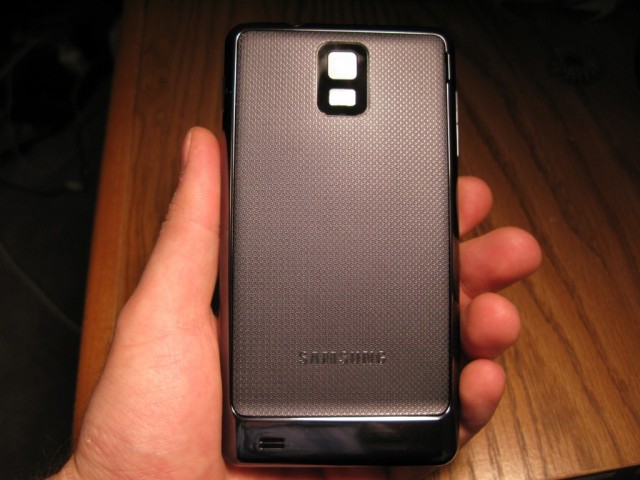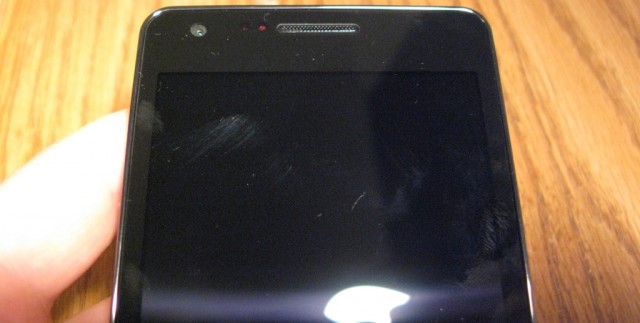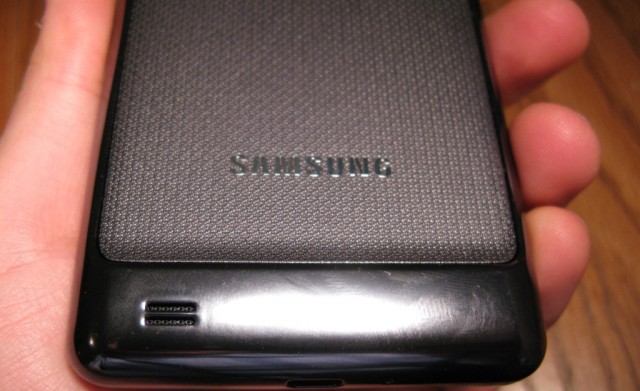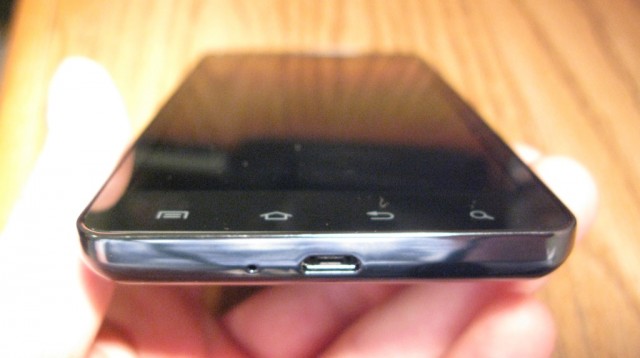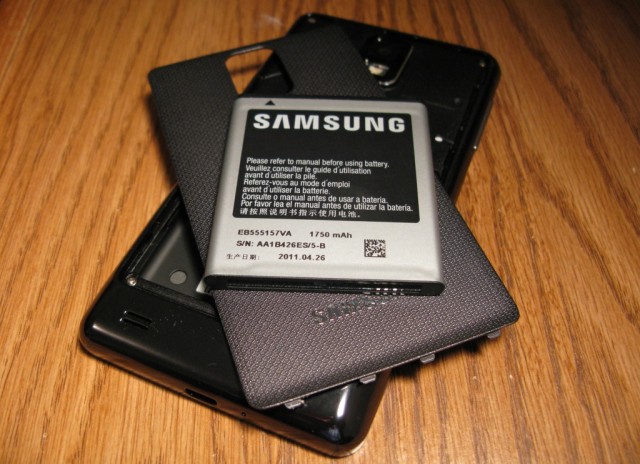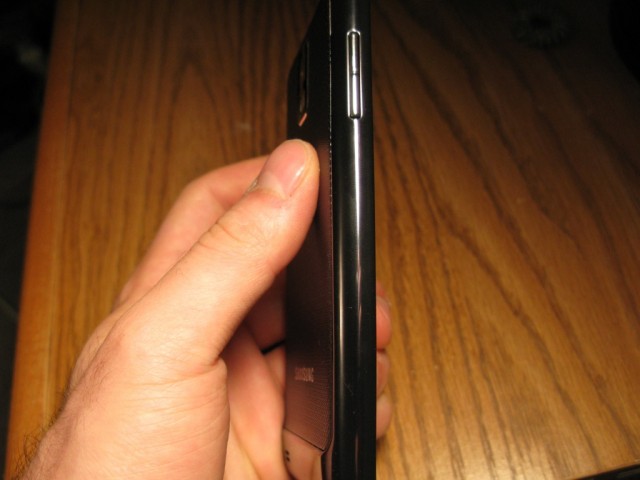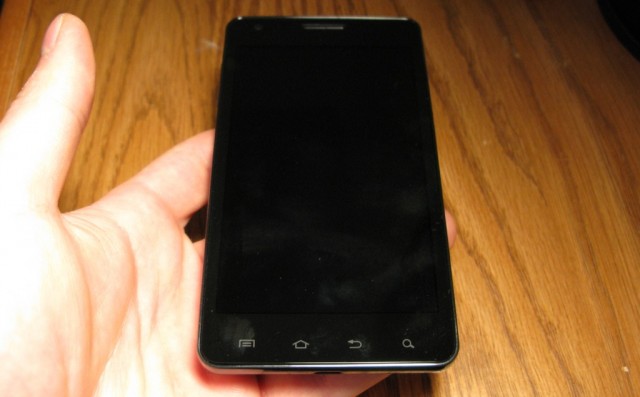 There is something fundamentally unnerving about déjà vu. Perhaps it’s owed to the dramatic turn it caused in The Matrix, the consequences of which are still imbued in our collective nerd consciousness. More so, déjà vu in the electronics world often makes us suspicious: why haven’t they innovated? Has the company become stagnant, re-treading old ideas with modern veneers? RIM has had to defend itself of late from these accusations, while customers and shareholders alike have rejected its extended stagnation.
There is something fundamentally unnerving about déjà vu. Perhaps it’s owed to the dramatic turn it caused in The Matrix, the consequences of which are still imbued in our collective nerd consciousness. More so, déjà vu in the electronics world often makes us suspicious: why haven’t they innovated? Has the company become stagnant, re-treading old ideas with modern veneers? RIM has had to defend itself of late from these accusations, while customers and shareholders alike have rejected its extended stagnation.
Samsung is on a different path. They seem to innovate in many ways, often wiping out previous generations of products when they announce new ones. The Galaxy S series was a hugely innovative line and the company reaped critical and commercial success from its many iterations. Rogers’ Captivate was arguably the most attractive of the variants, with its aluminum battery cover and squared-off aesthetic. But with any commercial venture, its sequel is expected to be better in every way, and as we’ve delved into with the Galaxy S II, it is.
So where does the Infuse 4G come in? It’s not a Galaxy S II, that’s for certain; indeed, it was released in the US in May, long before the SGS2 was announced for Bell. But today’s reality is different. Rogers has decided that by looks alone, and its massive 4.5” display, the Infuse can compete with its powerful sibling, and they’re hedging a bet that may just pay off.
So, if the Infuse 4G is the Galaxy S 1.5, does it incorporate enough elements from its successor and eschew the problems of its predecessor to make it a successful bridging device? Can it stand on its own in the world of superphones? Read on to find out.
Specs:
– Android 2.3.3 Gingerbread with TouchWIZ3 overlay
– 4.5” 480×800 pixel Super AMOLED Plus w/ Gorilla Glass
– 1.2Ghz Cortex A8 Hummingbird SoC
– 512MB RAM / 16GB internal storage (1GB for apps)
– 8MP back camera with LED flash / 1.3MP front camera
– 720p video capture
– HSDPA 21 Mbps, HSUPA 5.76 Mbps
– WiFi, Bluetooth 3.0 w/ A2DP, A-GPS w/ Google Navigation
– 132 x 71 x 9mm
– 139g
The Phone
To look at the Infuse 4G, you’d think it was a shoe-in for a Galaxy S II impostor. Clearly the two devices were designed synchronously, and whether the Infuse borrowed, or did the other, does not matter. The two are eerily similar devices. From the front, the main difference is the massive screen. At four and a half inches, the Infuse is has the largest screen we’ve ever used on a smartphone (not counting the Dell Streak, which we categorize as a tablet). But because the chassis weighs only 139g, two grams more than the iPhone 4, it does not feel particularly oversized. It will certainly not appeal to everyone — it will be a bit of an adjustment coming from anything less than four inches — but we had no problems fitting the 8.9mm device in our hipster jeans and going about our business.
Its design is also premium, and though it is made entirely of plastic materials, like the SGS2 there is nary a creak or vulnerable line to be found. The bezel’s colour is called “Caviar Black” and for good reason: the entire back side, from the chrome perimeter to the textured backing exudes business professional. We have no doubt many IT departments looking to distance themselves from their Luddite backwaters fleets of BlackBerries will outfit their team with the Infuse 4G.
The battery cover, which takes up a small amount of the overall device, is a small piece of flexible plastic that, while easily contorted is indelibly robust. Bend it all you want, the battery cover reverts to its original form. Below that is the small chin, familiar to all Galaxy S owners, which houses the mono speaker. There is 16GB internal storage inside the Infuse, 1.9GB of which is set aside for app storage. This is in addition to the empty microSD slot which can hold up to 32GB.
Despite the fact that the design is remarkably similar to the Galaxy S II, the added weight in fact makes the Infuse more enjoyable to use. In day to day tasks, combined with the increased screen size, the Infuse is a durable, Gorilla Glass-endowed workhorse.
The Display
The Infuse 4G has a 4.5” Super AMOLED Plus display, and despite having only 480×800 pixels it is vivid, sharp and bright. One of the benefits of Samsung’s screen tech is that it minimizes reflection between the LCD and the glass by fusing them together with the digitizer. The screen, though it is perhaps not as quantifiably bright as its Super LCD counterparts appears so to the naked eye, and uses less battery to boot.
Reading on the Infuse is a pleasure, as, like the Galaxy S II, blacks and whites are very natural; it’s as close to reading a piece of paper as you’re going to get from a cell phone screen. Occasionally, though, the low pixel density does distract from the mostly-flawless show: text, especially serif types, appear jagged and aliased. And when watching video, especially those coded at 720p, the low native resolution is most apparent; there is a distinct lack of sharpness around still objects.
Performance
The Infuse is beautifully-designed and its display one of the best in the business, but underneath its visage are components thoroughly rooted in 2010. It wouldn’t surprise anyone to assume it had the same specifications as the Galaxy S II — heck, they could be misplaced twins when looked upon from a few feet away. But the Infuse runs a single-core 1.2Ghz Hummingbird processor with 512MB RAM. Yes, the same Hummingbird processor that emblazoned the original Galaxy S Captivate over a year ago, clocked 200Mhz higher. For its time, the processor was the best in the business, and still chugs happily away on millions of Samsung devices; it even powered the Galaxy Tab.
But a year later its performance appears anemic, unable to keep up with the Android status quo. Now, let’s look at this from two perspectives: from the reviewer’s tongue, who, used to playing with the most virile and modern chips, the Infuse performance should have been improved. It is unable to play most 480p-encoded Flash videos inside the browser without stuttering; apps take a comparatively long time to load; it cannot properly encode 1080p video in its camera app, and cannot decode 1080p video in its movie app; it benchmarks at a level we were used to seeing nearly two years ago.
For a “regular” person, however, the Infuse is going to seem very very fast. Compared to the modern visual overhaul of the Galaxy S II’s TouchWiz4, its predecessor is relatively lightweight and quick. There is no slowdown when browsing through menus, and for someone coming from a first-gen Android device, or even a BlackBerry or iPhone, the Infuse seems faster.
Browsing the web is always a test of a device’s ability, and the Infuse seems to be able to keep up quite well. As we showed on the video review, Samsung has wisely optimized the native browser to support buttery pinch-to-zoom. We did notice a bit of a bug when using the browser: flicking your finger up or down a web page, which would normally cause the window to increase speed until it bumps the top or bottom of the page, stops after a second or two. The so-called kinetic scrolling we saw in the Galaxy S II is either not working properly, or Samsung thought the processor couldn’t keep up with the page rendering and forces the scroll to stop before it should. We think it’s a bug, but it’s too soon to tell.
Since the Hummingbird SoC has a relatively powerful graphics processor inside of it, the device keeps up with all the latest games, though we did notice the occasional stutter in HD games like Asphalt 6 and N.O.V.A. 2.
Fans of the synthetic benchmark are going to be non-plussed: the Infuse scored an anemic 930 on the Quadrant Benchmark suite. The Sunspider Javascript benchmark didn’t fare much better: 5980ms, compared with under 4000ms for most dual-core devices. Suffice it to say, the Hummingbird chip powering the Infuse 4G is still a fine, capable specimen. But, like a champion horse of yesteryear, it’s still running the race, only now you can see the first-place jockey disappearing quickly into the distance.
Camera and Video
The Infuse 4G picks up where the Captivate left off and turns the volume to 11, or in this case 8MP from the predecessor’s five. There is no denying that the Captivate’s lack of LED flash was disappointing — heck, it was the only thing in the way of the Galaxy S line having truly awesome photo capabilities — and luckily this is rectified on the Infuse.
Likely the same sensor as in the Galaxy S II, colours are accurate and there is a seemingly endless amount of detail. Noise is kept to a minimum and, while the end results didn’t have the same eye-popping artificial vividness to everyone’s favourite phone snapper, the iPhone 4, we preferred the slightly muted and more balanced results from the Infuse. The flash is bright without saturating, and about the same speed as the SGS2, though low-light shots were pretty good, so you won’t always need it.
The camera app is identical to the one found on the Captivate, and is sure to please most with its simplicity, though we did have some issues with the interface (that were subsequently improved upon in the Galaxy S II). Many of the settings are available via a slide-out context menu, but some of them require you to touch another button in order to open a separate, and clunky, settings application. This adds two extra touches and another layer of user interaction that shouldn’t be present in a modern smartphone.
On the plus-side, the camera takes shots quickly, and many of photo junky’s expected tweaks like white balance and ISO settings are included. The device also has a 1.3MP front-facing camera, which is a nice step up from the VGA shooter on the Galaxy S Vibrant (the Captivate doesn’t have a FFC) and, in the right conditions, shots are clear with a good amount of detail.
Despite having the chops for it in an 8MP sensor, the Infuse is limited to 720p video shooting. We suspect this is due to the single-core processor not being able to keep up with the high bitrates of 1080p, but that’s just a guess. What’s important, though, is that at the resolutions it can support, the Infuse takes fantastic, clear, detailed 30fps video, and that’s a pleasure to see. Samsung has really stepped up its game, and we’d say the quality equals or even surpasses the Sony Ericsson Xperia arc as the best 720p shooter in the Android game, though in low-light conditions the arc still wins by a fair margin.
Network Speed and Call Quality
The Infuse 4G is outfitted with a radio capable of pushing 21Mbps theoretical download speeds. We have to emphasize theoretical because the bottleneck here is Rogers’ HSPA+ network, which usually gives us anywhere between one and 4Mbps depending where, and at what time, we do the speed test.
In the upstream, the Infuse is capped at a healthy 5.76Mbps, and Rogers has clearly been doing some work on its network because we are consistently able to reach upload speeds above 1Mbps, something that didn’t seem possible a year ago.
As for call quality, the Infuse does a great job. Calls are clear and loud, despite the phone being a little awkward to hold up to your face for extended periods. As we said before, we don’t recommend the Infuse for those with small hands, and that doubly applies when holding the phone to your head; it’s easy to mistake the device for a tablet when looked upon from far away.
If hands-free calling is your thing, the mono speaker on the back is loud and clear, with enough bass to make the occasional YouTube video a pleasant enough experience.
Battery Life
Thankfully, the large screen on the Infuse does not correlate to bad battery life; the 1750mAh contained within the replaceable part has more than enough juice to last through a full day. And due to the super-efficient nature of the Super AMOLED Plus display and relative low-power consumption on the Hummingbird processor, the Infuse sips battery with the best of them.
We were able to have a day and a half of relatively high use, with a couple push email accounts, background Twitter updates, browsing, app downloads, a few photos and some gaming. You should be able to get more out of the battery by disabling background syncing and going manual, and, because Rogers still has its 2G network to fall back on, turning off 3G and resorting to slower network speeds or WiFi only. Surely not a solution, but it’s the 3G radio, along with background syncing, that eats up so much of an Android’s battery. Overall, we were very pleased with the battery life on the Infuse: we were able to get nearly six hours of continuous video playback from a single charge.
TouchWIZard 3.0
One of the nicer aspects of the Infuse 4G is that it comes with Android 2.3.3 Gingerbread loaded out of the box. No waiting months for the upgrade, no missed release dates, no stress. During the release party, one of the Samsung executives claimed the reason it took so long to arrive in Canada was because they wanted to have it ship with Gingerbread, as opposed to the AT&T version, which came in May with Froyo.
Unfortunately, but for a few aesthetic improvements (the notification bar, and most of the menus are a satisfying charcoal colour), you’d be hard-pressed to tell the difference between Froyo and Gingerbread on the Infuse. Unlike the Galaxy S II, the Infuse ships with a legacy version of its Android overlay, TouchWIZ3, lacking many of the user experience improvements we loved on the SGS2.
Still, as with the phone itself, there is nothing inherently wrong with older technology, and TouchWIZ3 holds up pretty well a year later. The app drawer is a horizontal-only enterprise, with three editable shortcuts hosted at the bottom of the screen. Newer apps are arranged on the right-most panel, but can be shifted by pressing and holding the icon and dragging between screens.
Similarly, the Infuse has several editable homescreens that support Android and Samsung widgets interchangeably. We missed the ability to re-size widgets from the SGS2, but there is nothing essential for operation missing from this version of TouchWIZ. In fact, Samsung leaves the operating system pretty sparse: modified calendar and contacts apps replace that of stock Android, which we like, and some superfluous additions like a diary app and combination stock ticker/analog clock widget. More useful is the Feeds and Updates widget, which consolidates your Twitter, Facebook and LinkedIn profiles on a single screen, though interaction is minimal and we’d recommend the official apps for all three services.
For the business crowd, the Infuse has excellent Microsoft Exchange and VPN support built into the framework, a big improvement over the stock Android experience, and the robust Samsung email client is awesome on the large display. The multi-touch keyboard could use some work, but thankfully Samsung ships the stock Gingerbread keyboard along with an up-to-date version of Swype. And, of course, you have access to the Android Marketplace and its myriad other options.
Rogers has wisely refrained itself from hosting an entire suite of branded apps. Instead we have just a useful MyAccount application, and a less useful UrMusic store, which has a clunky 3D interface we could live without. Still, less is more in this case, and the lack of game demos, useless bloatware and memory-hogging background processes is noted and appreciated.
Conclusions
The expression “two steps forward, one step back” comes to mind when considering what score to give the Infuse 4G. Sure, it’s a modern-looking, attractive device that will please the majority of its patrons looking for a high-end Android phone. But for what it lacks, the Infuse 4G is still extremely capable. The operating system is fast and stable; browsing is a pleasure (barring except for Flash playback); movies are vivid and rich on the 4.5” display; camera shots are excellent; sound quality is top-notch and battery life is superb. The benchmarking crowd are going to quickly dismiss it as last years’ tech, but more than anything it’s a testament to how far ahead Samsung was a year ago, not a disparagement on where they are now.
For $149.99 on a three-year term, the Infuse is too expensive. But Best Buy has already discounted it by $50 and Rogers will likely quickly follow suit. We like to look at the glass half full, and with the Infuse it’s slightly above the meniscus.
The Rogers Samsung Infuse 4G is available for $149.99 on a 3-year term and $549.99 outright.
Rating: 7/10
Pros:
– Beautiful, vivid Super AMOLED Plus display
– Ships with Gingerbread
– Excellent battery life for such a large device
– Good build quality, very thin body
– Camera takes fantastic still shots
– Generally good performance
– Lack of bloatware is refreshing
-16GB built-in storage is nice
Cons:
– May be too big for some hands
– Mediocre 3D and Flash playback performance
– Expensive
– Still uses TouchWIZ3 and its limited feature set
– Included Samsung keyboard needs work
– A few software bugs
MobileSyrup may earn a commission from purchases made via our links, which helps fund the journalism we provide free on our website. These links do not influence our editorial content. Support us here.

